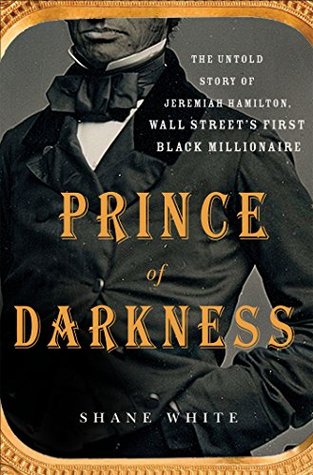More on this book
Kindle Notes & Highlights
by
Shane White
Read between
December 2, 2022 - December 11, 2024
eight-volume reference work African American National Biography (2008) contains an entry for each of more than 4,100 African Americans,
LostinaLibrary and 2 other people liked this
reading newspapers discolored with age—reveling in their feel, smell and appearance—remains, to my mind, one of the pleasures of being an historian.
Lois and 1 other person liked this
Most infamously, in 1781, Captain Luke Collingwood of the Zong informed the crew of his slaver that “if the slaves died a natural death, it would be the loss of the owners of the ship; but if they were thrown alive into the sea, it would be the loss of the underwriters.”
Lois liked this
American ideas of race had little room for the subtleties of color gradations common in the Caribbean or South America—in New York you were either black or white. No matter how much Hamilton tried to distance himself from other African Americans, to anyone who saw him on the street he was just one more Negro.
Lois liked this
In the 1830s, the best-known—perhaps by this time “notorious” is a better word—black man in New York to have a white wife was the actor James Hewlett. And he had more than one.
the blackface acts of George Washington Dixon and T. D. Rice in the 1830s put him out of business.
Several became irascible when they noticed that one of the latecomers, Caleb Alexander, “a grey headed negro,” had not just a white wife, but a very young white wife.
For many white New Yorkers, independent property-owning blacks remained a disturbing inversion of the natural order.
As with every boom the world over, the expectation of continued easy and large profits drew in new investors who were inexperienced, often touchingly naïve, and ill prepared to lose their painstakingly accumulated savings.
many of New York’s prominent families profited from the sex trade.
Earlier, in 1833, Thompson had bought several adjoining lots of land with frontages of fifty feet on Seventh Avenue, fifty feet on the Bloomingdale Road (or Broadway) and 112 feet on Forty-Second Street.
The Bank of England—an institution that Philip Hone noted grimly was “arbiter of the fate of the American merchant”—jacked up its discount rate and staunched the flow of money to the United States.
the panic of 1837.
Although a few individuals publicized the link between human bondage and sweetened tea, Hamilton and almost every other businessman in the Atlantic world focused on the potential returns on capital to be made by trading in sugar.
In 1841, the Whig-dominated 27th Congress created a federal bankruptcy system.
The Bankruptcy Act
Antebellum Wall Street had a terrible reputation, and for more than just sharp practice.
He took out a sixty-day option on one hundred shares of Long Island Railroad, agreeing to forfeit $250 in the case of his not buying them. The stock fell in price, so Hamilton did not exercise his option and lost his $250.
Not only was the stock exchange’s public blackballing of Hamilton extremely unusual, it was also newsworthy.
Expecting the black broker to have boycotted buying and selling these shares is unreasonable—ideas of using economic leverage for the benefit of African Americans did not become commonplace until the “Don’t Buy Where You Can’t Work” struggles in Harlem ninety years later, and disinvestment would not become a serious issue for a further half-century, when the campaigns were launched against South African apartheid.
the arresting image of a black millionaire strolling through the terraced garden in front of his mansion, surveying the splendors of his New Jersey estate, let alone the startling idea of him fishing for trout or shooting quail for sport, does not fit well with our usual understanding of the way African Americans lived in the antebellum North.
Hamilton made a point of hiring the best lawyers.
Isabella Ganneclift, born in Gibraltar in 1793, had married a Spaniard at twelve years of age and by the time she was seventeen had borne four children, only one of whom survived.
In early 1852, James McCune Smith, the black intellectual, canvassed the relationship between wealth and race in several letters to Frederick Douglass. As intended, these wide-ranging essays were published in Frederick Douglass’ Paper. In the first piece, Smith contemplated what would occur if every free black man received $100,000 and owned a “brownstone front and a pair of greys in the avenues.” He concluded that little would change:
Alexander Crummell [an antislavery activist and early pan-Africanist] has done more for the advancement of our people
William Wilson, writing under the name Ethiop, responded to Smith’s essay.
for the statistical purposes of the federal government Jeremiah Hamilton was not a black man. In the 1850, 1860 and 1870 censuses he was counted as a white individual.


